From Racing Pigeons to Mourning Doves
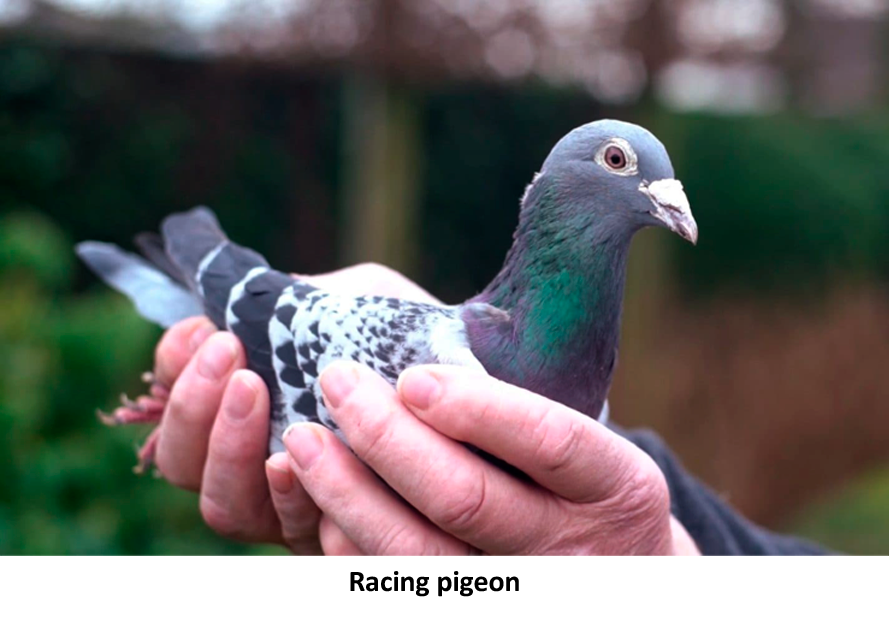
For thousands of years, domesticated pigeons have been an integral part of human life. Egyptian hieroglyphics and stone carvings in Mesopotamia (now modern Iraq) indicate that these birds were domesticated at least 5,000 years ago. Over centuries they have been kept as symbols of prosperity, used for religious sacrifice, eaten, and trained as couriers. Before the invention of the telegraph (1835), they were the quickest means of sending long distance messages. Today they are bred for show or used in pigeon racing. Feral pigeons, that you seem to see everywhere, are domesticated pigeons that have returned to the wild. My first experience of domesticated pigeons was in April 1953, when we moved into a new home that had a dovecote with about a dozen beautiful white fantail pigeons; for more on this, I refer you to my novel Unplanned.

Pigeons today are usually bred either for show at competitions or to increase their speed and homing instincts as a racing bird. Those raised for racing are usually known as homing pigeons or racing homers, whereas show birds are subdivided into a range of various types such as Fantails, Carneau, Jacobins, Tumblers, Frillbacks, Pouters, and Tipplers.
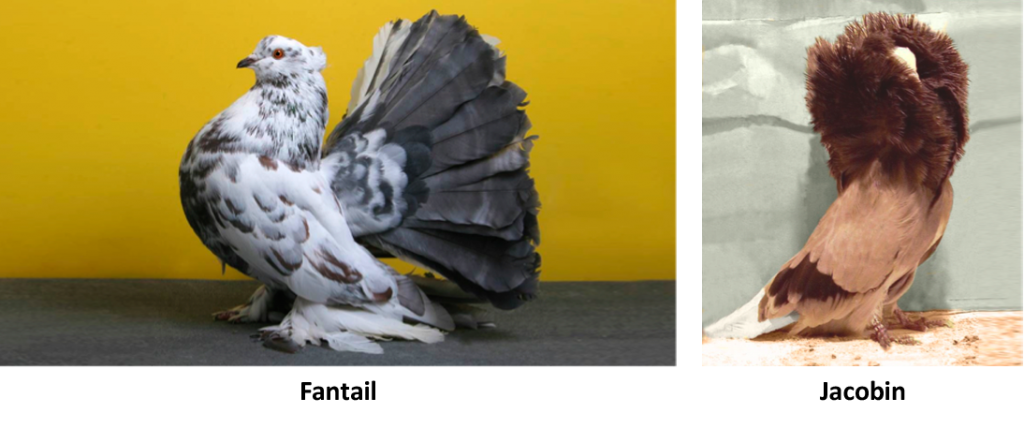
The ancestor of all pigeons is the rock dove, called the rock pigeon in the United States. The species is native to Europe, North Africa, the Middle East, and South Asia, and although widespread, its numbers are decreasing. Elsewhere, such as in the Americas and Australia, these birds originated from captive stock and are classified as rock pigeons (feral type) instead of rock pigeons (wild type). The estimated global population of rock pigeons is as high as 400 million birds. The two types are similar in size and shape but it is the feral type that displays the variations in colors and patterns.
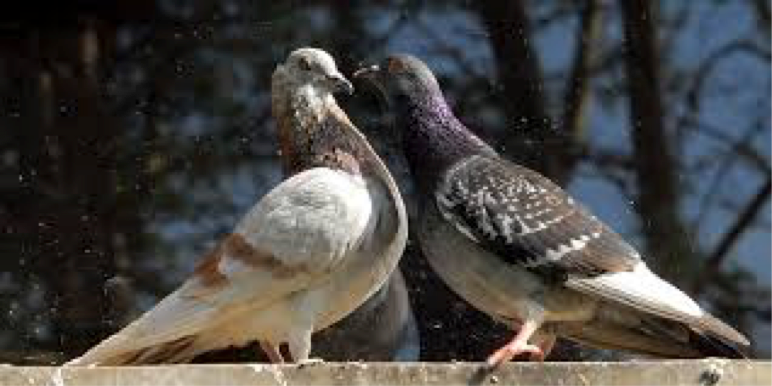
Feral pigeons (taking on some of the colors bred into domesticated fancy pigeons)
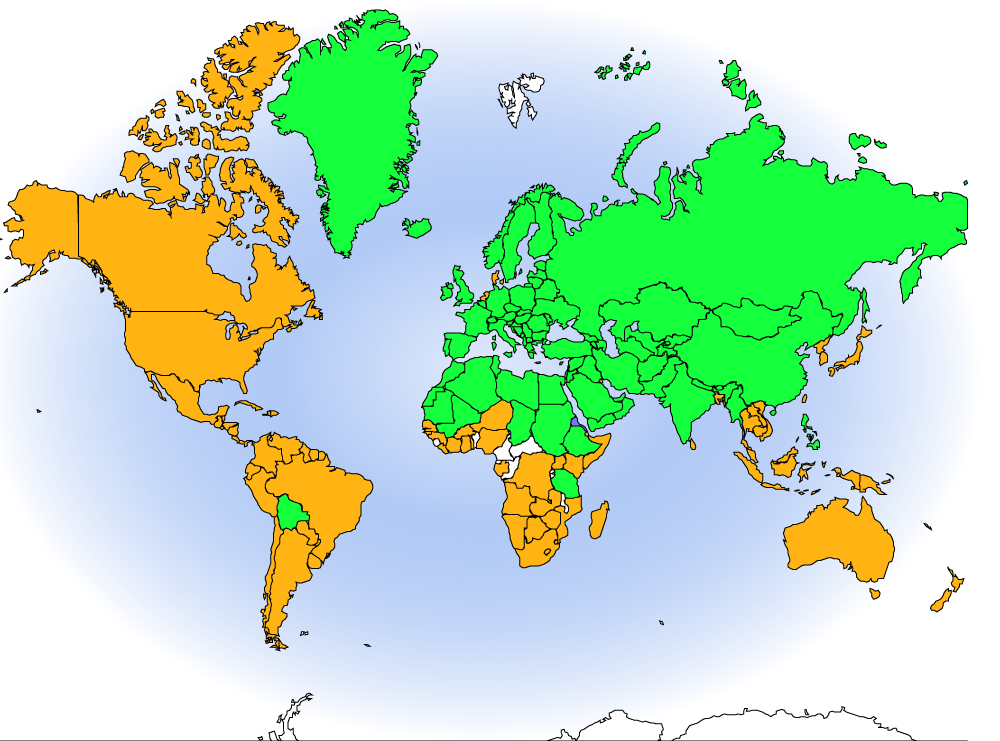 Rock Pigeon (wild and feral) Range Map: green – native and/or nesting: orange – introduced
Rock Pigeon (wild and feral) Range Map: green – native and/or nesting: orange – introduced
Originally pigeons were brought from Europe to North America during the 1600s to provide food for settlers and to be used for religious purposes. However, they quickly began to breed, and as some escaped, they rapidly spread across the continent. Today they are widespread in North America. Under the 1918 United States Migratory Bird Treaty Act they were excluded from protection since they are non-native and were considered an invasive species like the house sparrow and European starling.
Many people treat rock pigeons as pests and hunt and shoot them. They are believed to spread disease, they infest our parks and public places, they damage crops in the fields, and they poop everywhere, including on your head.
Yet for those who breed pigeons, the bird is worthy of protection. The racing homer is bred for its endurance, speed, and desire to return “home”, with racing distances from as short as 62 miles (100 km), up to 620 miles (1000 km). The bird typically flies at about 50 miles (80 km) per hour. Prize money for winning races can be substantial. The South Africa Million Dollar Race offers $1.6 million in prizes with the first prize worth $300,000. Pigeon racing is a serious sport, and a highly successful pigeon is highly valued. In November 2020, a two-year old female racing pigeon was auctioned to a Chinese purchaser for $1.9 million, making it the highest valued racing pigeon ever.

Exactly how racing pigeons navigate their way home is unclear. A favored theory is that they use the position and angle of the sun and landmarks. However, often races take place during sunny, clear weather, yet large numbers disappear. In June 2021, about 10 percent of the 250,000 birds released across the UK for a competition made it home on time, but the others either straggled home much later or are still missing.
Another theory is that pigeons use the Earth’s magnetic field because they have a concentration of iron particles in their bill. A third idea is that they can detect low-frequency sounds coming from the earth and oceans and use these to travel home.
Of course there are many other species of pigeon and dove worldwide. In fact there are over 300 species, some occupying tiny areas, like a single island (for example Granada), or small parts of a country ( like the Somali pigeon in northern Somalia or the black-billed fruit dove in the north-east corner of Australia’s Northern Territory).
In North America, the commonest I see here in California is the band-tailed pigeon, a native of the west and southwestern states. It is the second most abundant species of pigeon in the United States, and usually travels in small flocks that will suddenly descend into backyards and steal seeds from bird feeders. There is also the white-crowned pigeon, native to southern Florida, and the red-billed pigeon that is seen in southTexas and throughout Mexico.
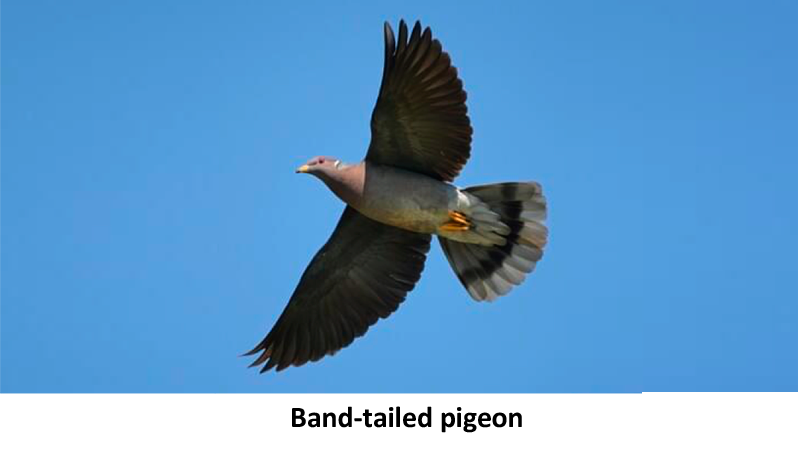
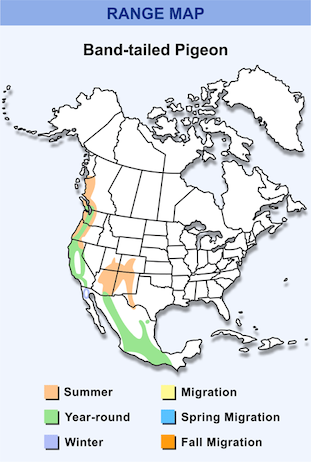 Band-tailed pigeon Range Map
Band-tailed pigeon Range Map
As for doves, there are 15 varieties in North America, with the mourning dove by far the most common. It is resident across two-thirds of North America and has an estimated population of two million. Doves are distinguished from pigeons by their smaller size and fanned tail; however, there is no scientific difference between the two types of bird. Doves are friendly, attractive birds, often seen in backyards where they feed on the ground under bird feeders, or on platform feeders.
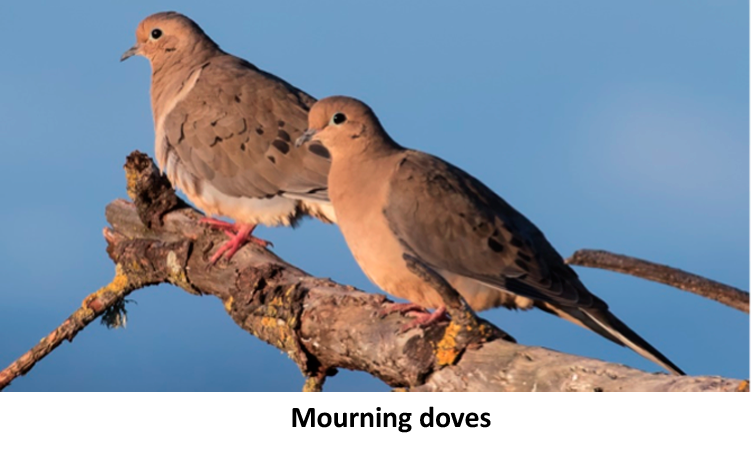
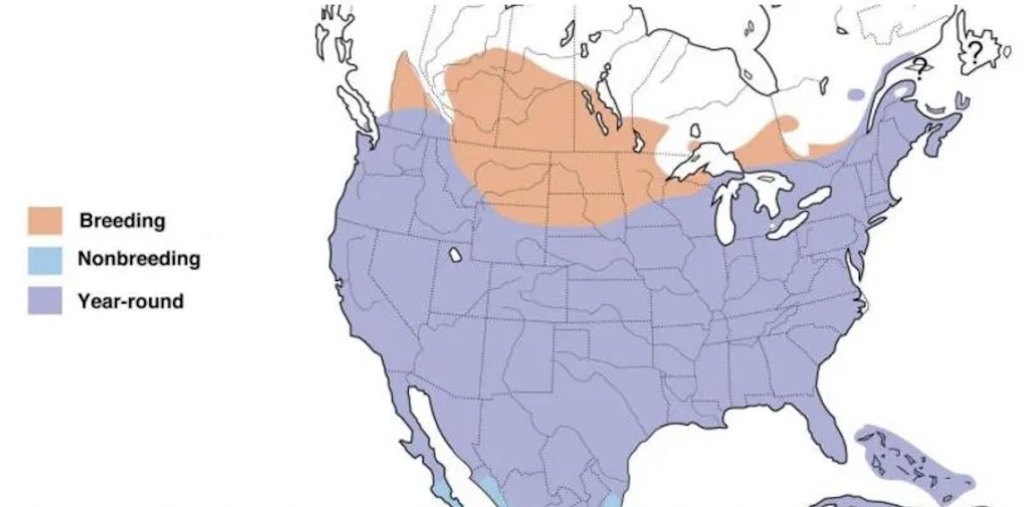 Mourning dove Range Map
Mourning dove Range Map
Hopefully, none of these species will suffer the same experience as the passenger pigeon, which is now extinct. This species was native to North America and the most abundant bird on the continent when Europeans first arrived. The population back then is estimated at around three billion. They lived in forests, ate nuts and berries, occupied very noisy nesting colonies, and were caught and eaten by humans. Numbers rapidly declined, and by 1900, there were none in the wild, and in 1914, the last one in captivity died.
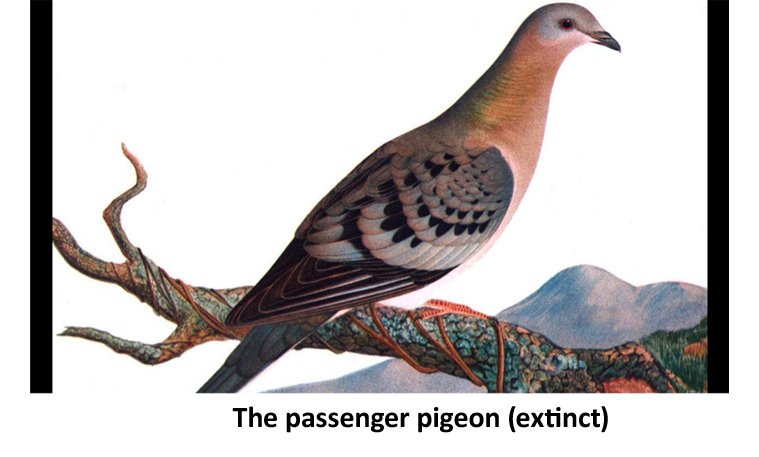
In the UK, during my childhood days, I enjoyed the summer-time visits from turtle doves, a species that is now seriously threatened in Britain. Today there are under 15,000 pairs breeding. The UK is also home to the collared dove and the stock dove. Probably my most favorite is the wood pigeon, the UK’s largest and commonest pigeon, and one whose nest of twigs often allowed me to see the two white eggs it contained before I climbed the tree.
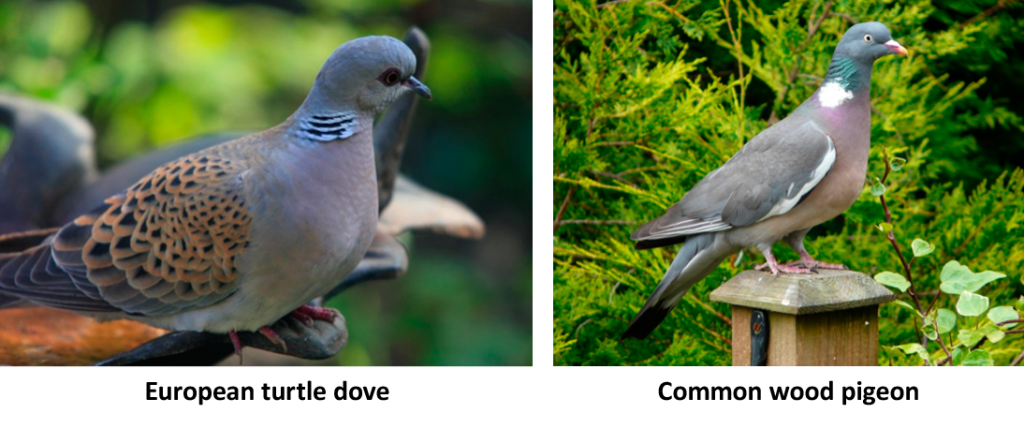
In summary, doves appear welcomed by humans as representatives of love, peace, and compassion, whereas pigeons are hated because of their abundance, mess, and aggressiveness. Our love-hate relationship with these birds needs to find the right balance. Hopefully, we can control the numbers of pigeons without having to hunt and shoot them. Who knows, one of them you shoot maybe a racing pigeon returning home.
(Author’s note: I would like to thank my friend Ted Adams of Pacheco Valley, CA who encouraged this article by providing me with a copy of the 1965 edition of the Encyclopedia of Pigeon Breeds by Wendell M. Levi. Long ago, Ted was the caretaker of about 50 homing pigeons)



